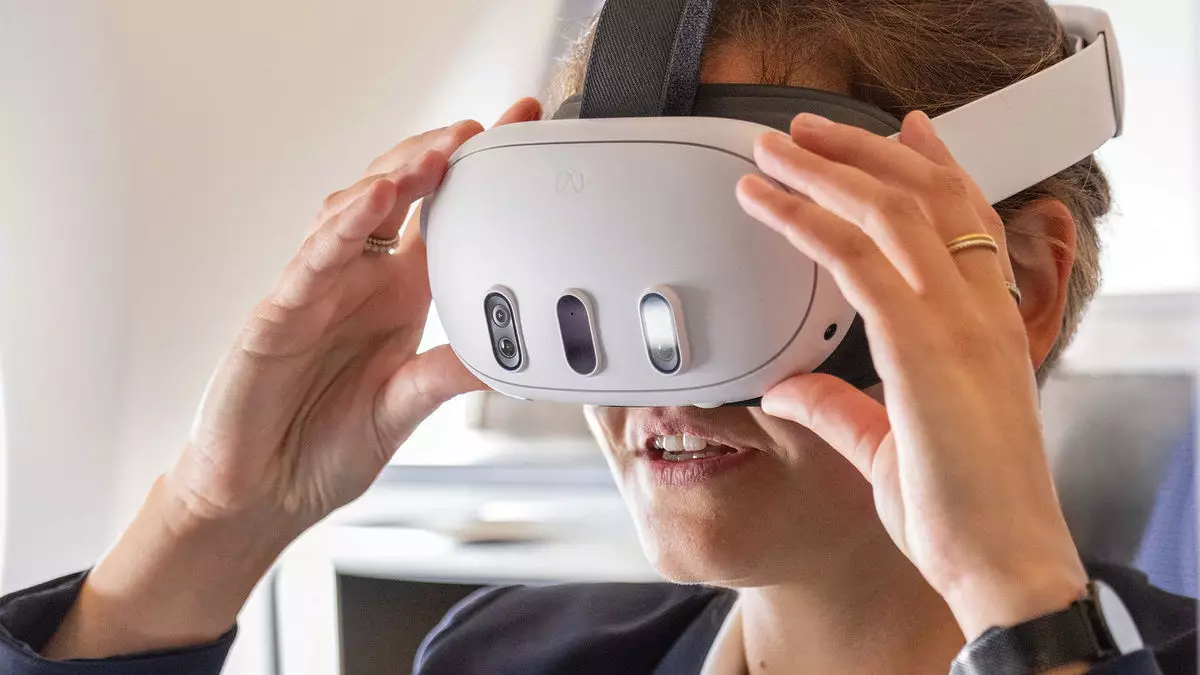As air travel continues to evolve, airlines are constantly seeking innovative ways to enhance the passenger experience. A notable endeavor is Lufthansa’s recent foray into the realm of virtual reality (VR) and mixed-reality technologies. This initiative could signal a transformative shift in in-flight entertainment, aiming to captivate fliers with interactive and immersive content. The airline has implemented a pilot program aboard its new Airbus A350 Allegris business-class cabins, offering passengers the Meta Quest 3 mixed-reality headsets filled with tailored content. This article delves into the implications, potentials, and challenges of this pioneering approach to in-flight entertainment.
Lufthansa’s decision to integrate mixed-reality headsets is not merely a trend but a reflection of a broader aspiration to revolutionize passenger engagement during flights. Scheduled to launch on select routes, including Munich to San Francisco and Munich to Chicago, the introduction of these headsets hints at what might become standard in the aviation industry. Utilizing two modes—one blending virtual and real-world elements, and the other offering an entirely virtual environment—passengers are granted the luxury of exceptional content offerings.
Among the initial content provided are movies, guided meditation sessions, virtual chess, podcasts, and destination previews. The immersive movie experience, in particular, is noteworthy; it simulates the sensation of watching on a grand screen, a stark contrast to traditional seatback displays. Interactivity takes center stage with the chess feature, allowing users to manipulate pieces with natural hand movements, and even engage with a virtual opponent. Moreover, the enhanced destination previews present a more captivating narrative, offering panoramas of cities and landmarks instead of static images, which could significantly enrich the travel anticipation experience.
Despite the excitement surrounding this technology, its current implementation is somewhat limited. Presently, these VR headsets are available to a select few—approximately 80 passengers daily traveling in business class aboard the Allegris. The airline aims to expand this offering as their fleet evolves, and while the notion of providing VR across entire flights remains unlikely, the prospect of broader accessibility is enticing.
Bjoern Becker, Lufthansa’s head of future intercontinental experience, has expressed an optimistic outlook on the probable longevity of VR in aviation. He argues that for over four decades, passengers have been accustomed to conventional screens. The introduction of mixed-reality technology could alleviate the feelings of confinement often associated with air travel, fostering an environment where entertainment seamlessly blends with the surrounding atmosphere of the cabin.
As the tech landscape changes and the devices become smaller and more user-friendly, Becker foresees a gradual shift in how passengers engage with entertainment. He also highlights potential revenue opportunities for airlines, such as virtual advertising, further underscoring the commercial viability of this initiative.
Lufthansa isn’t the lone entity exploring the potential of mixed-reality headsets within the aviation industry. However, reactions from other airlines indicate a more cautious viewpoint. Executives from Delta Air Lines and Aeromexico have voiced skepticism regarding the wholesale replacement of seatback screens by VR technology. Delta’s managing director of customer experience, Ekrem Dimbiloglu, notes that a substantial percentage of passengers continue to engage with seatback systems, suggesting that these traditional elements still hold considerable sway over customer preferences.
Antonio Fernandez of Aeromexico concurs, arguing that immersive dreaming about technological advancements should not overshadow the proven customer appetite for seatback remote access to movies and other content. This juxtaposition between innovation and reliability showcases an ongoing debate within the industry regarding the best path forward in catering to modern fliers.
While some industry leaders believe that VR technology might take time to fully integrate into the inflight experience, it’s critical to recognize that travelers are increasingly leaning towards diverse methods of content consumption. Shai Weiss, CEO of Virgin America, suggests that the future will likely involve a blended experience where passengers harness multiple screens, potentially incorporating their personal devices alongside any airline-provided solutions.
As the travel industry emerges from the COVID-19 pandemic and heads into an uncertain economic landscape, the emphasis on enriching passenger experiences has never been more essential. As Lufthansa blazes a trail with its virtual reality offerings, other airlines must carefully consider their strategies in adapting to evolving consumer expectations. The future of in-flight entertainment remains to be seen, but one’s clear—innovation will play a crucial role in shaping the air travel experience in ways we have yet to imagine.


Leave a Reply